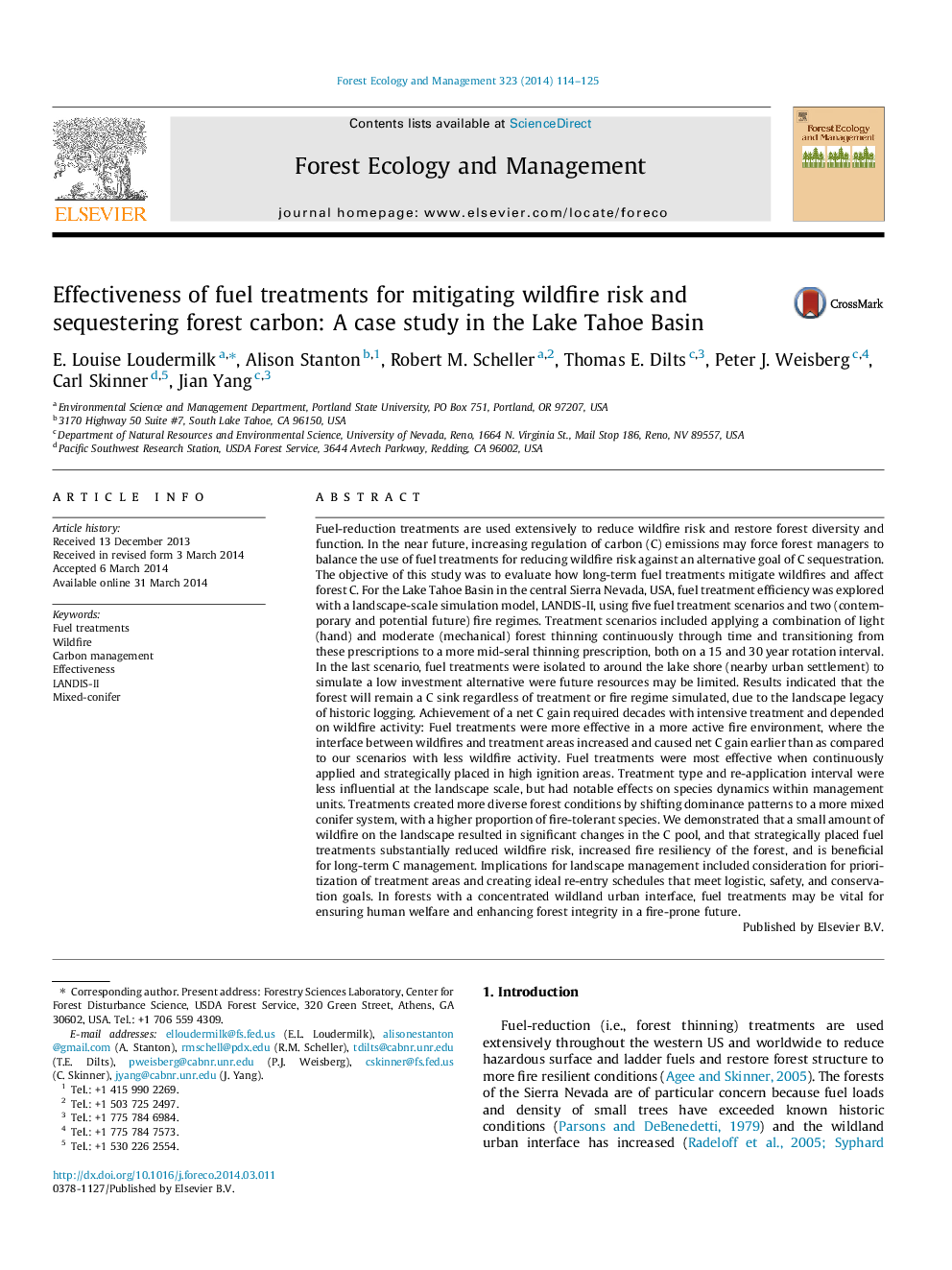| کد مقاله | کد نشریه | سال انتشار | مقاله انگلیسی | نسخه تمام متن |
|---|---|---|---|---|
| 86691 | 159206 | 2014 | 12 صفحه PDF | دانلود رایگان |
• We studied fuel treatment effectiveness for fire and carbon using a landscape model.
• Forests may continue to sequester carbon, regardless of treatment or fire regime.
• Net carbon gain took decades, dependent on wildfire activity and treatment locale.
• Strategic treatment placement in high ignition areas were important for efficacy.
• Treatments were important for forest wildfire resilience and carbon management.
Fuel-reduction treatments are used extensively to reduce wildfire risk and restore forest diversity and function. In the near future, increasing regulation of carbon (C) emissions may force forest managers to balance the use of fuel treatments for reducing wildfire risk against an alternative goal of C sequestration. The objective of this study was to evaluate how long-term fuel treatments mitigate wildfires and affect forest C. For the Lake Tahoe Basin in the central Sierra Nevada, USA, fuel treatment efficiency was explored with a landscape-scale simulation model, LANDIS-II, using five fuel treatment scenarios and two (contemporary and potential future) fire regimes. Treatment scenarios included applying a combination of light (hand) and moderate (mechanical) forest thinning continuously through time and transitioning from these prescriptions to a more mid-seral thinning prescription, both on a 15 and 30 year rotation interval. In the last scenario, fuel treatments were isolated to around the lake shore (nearby urban settlement) to simulate a low investment alternative were future resources may be limited. Results indicated that the forest will remain a C sink regardless of treatment or fire regime simulated, due to the landscape legacy of historic logging. Achievement of a net C gain required decades with intensive treatment and depended on wildfire activity: Fuel treatments were more effective in a more active fire environment, where the interface between wildfires and treatment areas increased and caused net C gain earlier than as compared to our scenarios with less wildfire activity. Fuel treatments were most effective when continuously applied and strategically placed in high ignition areas. Treatment type and re-application interval were less influential at the landscape scale, but had notable effects on species dynamics within management units. Treatments created more diverse forest conditions by shifting dominance patterns to a more mixed conifer system, with a higher proportion of fire-tolerant species. We demonstrated that a small amount of wildfire on the landscape resulted in significant changes in the C pool, and that strategically placed fuel treatments substantially reduced wildfire risk, increased fire resiliency of the forest, and is beneficial for long-term C management. Implications for landscape management included consideration for prioritization of treatment areas and creating ideal re-entry schedules that meet logistic, safety, and conservation goals. In forests with a concentrated wildland urban interface, fuel treatments may be vital for ensuring human welfare and enhancing forest integrity in a fire-prone future.
Journal: Forest Ecology and Management - Volume 323, 1 July 2014, Pages 114–125
